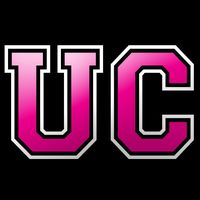Give Me… Some Credit
Cheerleaders far more than just pretty faces
By Janet Adamana
Winnipeg Free Press
Sexy uniforms, shiny pompoms, claps, kicks and crazy flips may be the first things that come to mind when you think of cheerleading. But local practitioners want you to know there is a whole lot more to the sport.
“People treat it like it’s not difficult,” says Mickaela McAuliffe, choreographer for the Winnipeg Blue Bombers Blue Lightning dance team. “It’s very difficult and very physically demanding.”
Carrie Robson, head coach of the University of Manitoba Bisons cheerleading team, agrees. “Cheerleading isn’t just about motivating a crowd. The stunts, tumbling and routine choreography take months of preparation.”
Robson, 28, has been cheerleading since Grade 6 and knows the sport often has a polarized public opinion. “Most people think of the stereotype of the bubbly, active girl who enthusiastically cheers on her fellow teammates.”
McAuliffe knows this is the popular image and one of her goals is to build a better reputation for the squad. “There’s no dumb blonds on this team,” she says. “We try to really fight that stereotype that we’re all just a bunch of airheads.” Many past teammates, and those auditioning for the 2010 season, are currently in school studying medicine, law and other professions. “We all have professional day jobs and this is something that we like to do for fun.”
Another negative image attached to cheerleading is derived from the typical cheering wardrobe. “The outfits are a bit revealing,” says Fiona Green, chairwoman of women’s and gender studies at the University of Winnipeg. She knows that to some, cheerleading is simply a profession. Like most others, this one has a particular dress code. But she says some women also see it as a way to use what they’ve been given. “A lot of women who are aware of their sexuality know it’s a commodity,” says Green. “That’s the big thing, knowing the rules of the game and knowing how to use it without feeling exploited.”
Although she says she doesn’t know much about cheerleading, she realizes the outfits are just as revealing in most other female sports. “There’s a lot more skin revealed compared to the uniforms worn by men.” She says a majority of the audience at professional games are heterosexual males. “So maybe that’s part of the draw,” she adds, “that these are all young, attractive women, that you can sit and watch.”
McAuliffe knows there are a lot of men at the games, but says her team is more dedicated to the craft of dancing, rather than simply being eye candy. “We work hard to make sure we’re out there entertaining the fans and dancing with legitimate choreography.” McAuliffe has been dancing since the age of three and paved a hefty career in dance, working as a professional choreographer and artistic director of the Doreen Bissett School of Dance. She also started her own dance company, Make Some Noise!, all of which she says helps boost the reputation of the team. “I think our professionalism and my involvement in the dance community brings a level of legitimacy to this team.”
Whether it’s a way to show off your stuff, or a way to express yourself through an art form, cheerleading seems to provide its participants with many positives. “It’s a really good platform for somebody who wants to continue dancing,” says McAuliffe. Many Blue Lightning members were into dance and cheerleading throughout high school and found themselves without many other opportunities for dance after graduation.
One Blue Lightning member, Charlene, whose last name cannot be used due to her contract with the team, saw it as a way to keep doing what she loved. She began her Blue Lightning career at the age of 19. Since then, she’s got more out of it than just a chance to dance. “I’ve learned a lot about myself, public speaking and being confident in my abilities,” she says. “I’m taking all of that to other parts of my life.”
Charlene has been dancing for the Bombers for the past six years. Although performing is her passion, she also takes much pride in the extra activities the team is required to do. “It’s a lot of hard work and commitment,” she says. “We put in a lot of volunteer hours outside of our actual practice hours.” On average, the team does up to 30 hours of community work, on top of giving up their time to simply dance on the team.
“I don’t think people realize that they do it voluntarily,” says Stacey Stone, Blue Lightning head coach. “They don’t get paid for this. They all work and a lot of them are in school and have families. So it’s something that shows they go above and beyond.”
Blue Lightning held the first phase of its 2010 auditions this past weekend, with about 26 girls trying to dance their way onto the team. But good moves and pretty faces aren’t enough. The second portion involves a professional interview with a panel of judges. “We carefully screen our candidates,” says McAuliffe, “We don’t allow people on the team who we feel are going to push our reputation in a negative way.”




